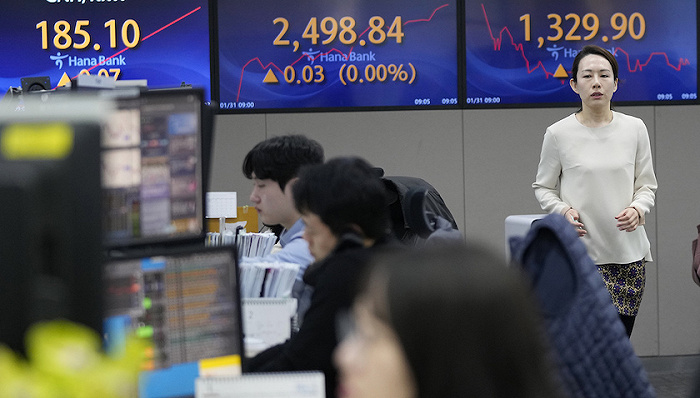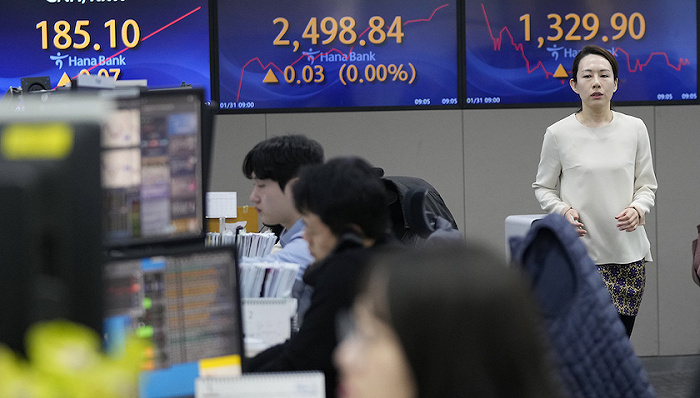On February 26, 2024, South Korean financial regulatory agencies issued a draft medium – to long-term plan to boost the country’s stock market.

This draft, titled “Enterprise Cost Promotion Layout,” mainly contains three aspects of substance, aiming to trigger the cost of independent promotion of listed companies to the enterprise.
Specifically, at the company level, Korean regulatory agencies will formulate a series of command steps to support the self promotion of listed companies. Companies that incur high costs or significant cost promotions, or prioritize shareholder return rates, will receive penalties and tax incentives from the authorities.
On the investor side, information disclosure and other measures will be taken to assist investors in evaluating the company’s actions and achievements, in order to make wise investment decisions and plans. One specific step is to establish the Korea Value up Index, which institutional investors such as pension funds can use as a benchmark index. A new ETF aimed at facilitating the aggregation of investors will also be listed, which can be used to track the Korean price rise index.
In terms of government institutions, the layout will promote the promotion of enterprise costs and implement the medium – and long-term agenda of the layout action. To this end, a dedicated support system will be established, such as creating a dedicated section, creating a staff committee, and launching a genre website in June to assist investors in more convenient search of various information.
The final version of the layout will be launched in the first half of 2024 after more companies have responded to the draft on the internet, and it is hoped that relevant companies can officially disclose the implementation information of the layout from the second half of the year.
Kim Joo hyun, President of the Financial Services Commission (FSC) of South Korea, believes that the “corporate cost promotion layout” summarizes the innovative actions taken by the authorities to implement fundamental changes in the resource market. This includes establishing a fair and transparent order of shopping malls, improving access to resource malls, and enhancing harm to ordinary shareholders. These steps are expected to help with the Korean Discount score.
“Korean haircut” refers to the valuation of Korean companies generally being lower than the global stock market. About two-thirds of Korean KOSPI listed companies have a price to book ratio (PBR) below 1, which means their market value is lower than the property cost on their balance sheet. According to data from the London Stock Exchange, the performance of South Korean tech giant Samsung Electronics is not much better, with a price to book ratio of only 1.2, while its rival TSMC has a price to book ratio of 5.2.
Compared to similar economies, the South Korean stock market has been underperforming in the long term. In 2022, South Korea’s major stock index KOSPI ranked last among the G20 group, only higher than peaceful Russia. In 2023, domestic investors in South Korea sold a net 13.8 trillion won (10.4 billion US dollars) of local stocks, marking the largest selling range in 11 years.
By contrast, neighboring Japan’s stock market is continuously reaching historic highs. On February 26, 2024, the Japanese stock market hit a new high, rising 0.35% to 39233.71 after breaking through a 34 year history high last week. On February 22nd, the Nikkei 225 index opened up 2.19% to 39098.68 points, setting a new historical high and breaking the record set on December 29, 1989 (38915.87 points).
Analysts have shown that the strong dividends of the company and the management reforms promoted by the authorities aimed at improving shareholder return rates have helped the Japanese stock market reach a new high. The undervaluation of the South Korean stock market is mainly due to the low dividend payout rate, opaque decision-making and planning system of chaebol groups, and weak management.
South Korea is following Japan’s example to boost the stock market. The latest draft layout of the “Korea Value up Index” has adopted the Japanese approach. In July 2023, Japan launched a similar JPX Prime 150 index, which includes the best performing Japanese companies and can help investors more easily identify companies with costs.
South Korea does not shy away from studying Japanese resumes. In the latest press release, the South Korean Financial Services Commission stated that their latest layout shares similarities and differences with Japan.
The similarity lies in both encouraging listed companies to voluntarily formulate and disclose valuation promotion layouts. The difference is that South Korea’s layout will consider the specific situation and needs of local companies, and encourage companies to voluntarily participate by providing a series of triggers and support for the layout.
However, with the cessation of publication, the new policy in South Korea did not meet the expectations of the shopping mall. On February 26th, the South Korean KOSPI index opened up 19.31 points, a decrease of 0.72%, at 2648.39 points.
The expectation of the company’s cost promotion plan announced this week has boosted the South Korean KOSPI index, which hit a new high in over 20 months last week.
Many analysts believe that in the medium to long term, the consequences of South Korean reform still need to be examined.
Analysts at Societe Generale believe that at this stage, it is not yet possible to determine the extent to which the reform layout will have an impact on the company, but the possibility of re valuation has increased.
Morgan Stanley analysts believe that the latest move can enhance people’s belief in continuous innovation in South Korea, but if not followed up, the KOSPI index will maintain a range of oscillations.
For the latest layout, Daniel Yoo, the head of equipment and decoration at South Korea’s Yuanda Securities Global Property, believes that the overall trend is positive, but lacks details on how unrelated companies can improve dividend payout rates, stock buyouts, and bans.
Huh Jae hwan, an analyst at Eugene Securities, believes that the layout issued so far is “too disappointing”. His performance layout for CNBC is too simple, with almost no specific triggering steps or mandatory requests, putting greater pressure on the mall to profit.
However, it is worth mentioning that since the end of 2023, the authorities of Yin Xiyue have shown signs of reform in resource shopping malls, which have clearly absorbed foreign investment inflows. According to Reuters, the influx of foreign investment into the South Korean stock market has increased by 10.2 trillion won so far in 2024, surpassing other emerging Asian countries, with an increase of 6.7 trillion won in February alone. Throughout 2023, foreigners bought 11.3 trillion Korean won worth of stocks.
